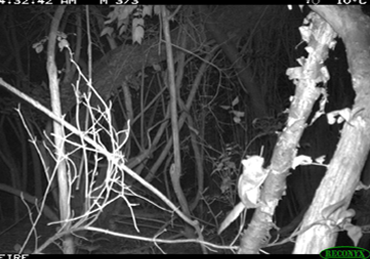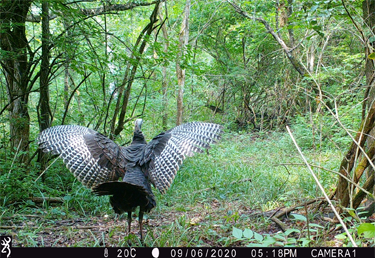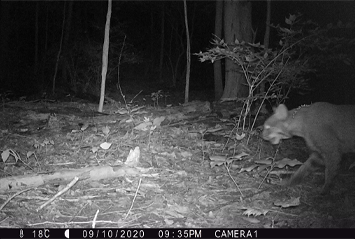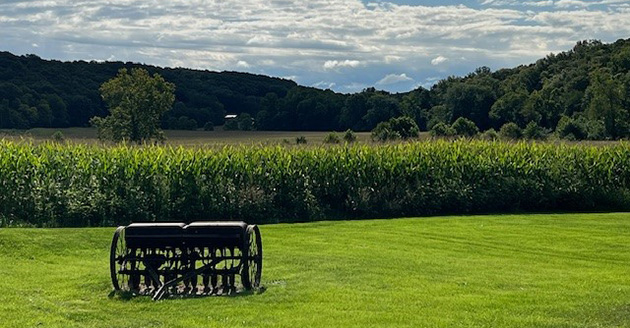 SNAPSHOT USA: First-ever nationwide mammal survey published today
SNAPSHOT USA: First-ever nationwide mammal survey published today
RALEIGH, N.C. - How are the squirrels doing this year? The bears? The armadillos? How would you know? A new paper published today sets up the framework for answering these questions across the United States by releasing the data from the first national mammal survey made up of 1,509 motion-activated camera traps from 110 sites located across all 50 states.
Unlike birds, which have multiple large-scale monitoring programs, there has been no standard way to monitor mammal populations at a national scale. To address this challenge, scientists from the North Carolina Museum of Natural Sciences and the Smithsonian Conservation Biology Institute recently collaborated with more than 150 scientists on the first-ever nationwide wildlife survey, called Snapshot USA.
“Our goal was to provide a space for researchers from all 50 states to contribute a subset of their data to a broader initiative to maximize our coverage of the country and better understand drivers of mammal distributions to best inform conservation as rapidly as possible,” said the Museum’s Curator of Mammalogy Michael Cove, lead author of the new paper.
 For two months in fall 2019 researchers collected more than 166,000 images of 83 different mammal species. White-tailed deer were the most common species detected (34,000+ times at 1,033 camera sites), followed by eastern gray squirrels and raccoons. Pygmy rabbits, mountain beavers, hog-nosed skunks and marsh rabbits were among the least common mammals photographed. Yet, the overall detection winner was the coyote, which was detected in all 49 continental states -- they have not made it to Hawaii yet. All the data are archived at the Smithsonian Institution’s eMammal database and published as part of the new paper.
For two months in fall 2019 researchers collected more than 166,000 images of 83 different mammal species. White-tailed deer were the most common species detected (34,000+ times at 1,033 camera sites), followed by eastern gray squirrels and raccoons. Pygmy rabbits, mountain beavers, hog-nosed skunks and marsh rabbits were among the least common mammals photographed. Yet, the overall detection winner was the coyote, which was detected in all 49 continental states -- they have not made it to Hawaii yet. All the data are archived at the Smithsonian Institution’s eMammal database and published as part of the new paper.In an interesting twist, developed areas tended to have the highest overall mammal detections, with three of the top five sites for total mammal activity being urban – Urbana, Illinois; Baltimore, Maryland; and Washington, D.C.
“These new data show that the urban mammal paradox, with more animals actually living close to people, is not just an isolated phenomenon” said coauthor Roland Kays, a scientist at the museum and at NC State University.
 Dr. Elizabeth Flaherty, associate professor of wildlife ecology and habitat management, and Purdue Extension wildlife specialist Jarred Brooke collaborated to collect the photos from Richard G. Lugar Forestry Farm, Martell Forest and the Purdue Wildlife Area. Following the month and a half of fieldwork, the pair uploaded all of the images to eMammal and identified all of the animals in each photo. Some of the cameras captured 1000s of photos.
Dr. Elizabeth Flaherty, associate professor of wildlife ecology and habitat management, and Purdue Extension wildlife specialist Jarred Brooke collaborated to collect the photos from Richard G. Lugar Forestry Farm, Martell Forest and the Purdue Wildlife Area. Following the month and a half of fieldwork, the pair uploaded all of the images to eMammal and identified all of the animals in each photo. Some of the cameras captured 1000s of photos.When comparing particular species across the country, the Purdue sites stood out for being in the “Top 10” for the relative abundance of raccoons (#4 at PWA and Martell Forest), wild turkeys (#7 Lugar Farm) and tree squirrels (#7 Lugar Farm). The sites at Luger Farm were ranked #7 overall for most mammals. National ranking of top sites for select mammal species can be found here: National Ranking Dashboard.
“I was surprised that we were nationally ranked for three species considering there were cameras in each of the 50 states,” Flaherty said. “That said, as someone who spends a lot of time at these properties, I was well aware of the large numbers of raccoons and tree squirrels. There weren’t any surprise species in the photos we collected, but I am surprised that we have had a southern flying squirrel on camera in both 2019 and 2020, because the cameras are all set relatively close to the ground and flying squirrels tend to spend most of their time in the forest canopy.”
 In addition to the capturing photos of the predictable species on the properties, Brooke said the project allowed them to see some others that normally go unseen.
In addition to the capturing photos of the predictable species on the properties, Brooke said the project allowed them to see some others that normally go unseen.“It was exciting to capture images of a bobcat,” Brooke said. “They are becoming more common in the state, but are not particularly common in this part of the state. We would’ve had a hard time knowing they were using the properties without being part of this project.”
The Snapshot USA research results appeared today in Ecology, a publication of the Ecological Society of America, the nation's largest organization of professional ecologists. The publication makes the 2019 survey data available online for anyone to use for research questions, such as the evaluation of changes in animal populations over time or informing conservation strategies for threatened and endangered species.
“This project involved a remarkable level of cooperation and data sharing that will have to be the standard going forward to adequately monitor our valuable wildlife resources at the national scale,” adds William McShea of the Smithsonian Conservation Biology Institute.
The scientists repeated the survey in fall 2020 likely providing insights on the effects of the COVID-19 pandemic on wildlife distributions and habitat use—resulting data will be available as the eMammal database is updated in 2021.





